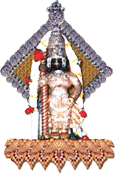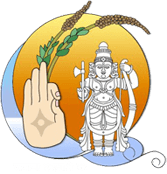अविनाशि तु तत् विद्धि यॆन सर्वं इदं ततम्
विनाशं अव्ययस्य अस्य न कश्चित् कर्तुं अर्हति ॥ २.१७ ॥
ಅವಿನಾಶಿ ತು ತತ್ ವಿದ್ಧಿ ಯೇನ ಸರ್ವಂ ಇದಂ ತತಮ್
ವಿನಾಶಂ ಅವ್ಯಯಸ್ಯ ಅಸ್ಯ ನ ಕಶ್ಚಿತ್ ಕರ್ತುಂ ಅರ್ಹತಿ || ೨.೧೭ ||
avinAshi tu tat viddhi yEna sarvaM idaM tatam
vinAshaM avyayasya asya na kashchit kartuM arhati || 2.17 ||
Absolutely indestructible is that by itself, by which all this is pervaded; no one can work the destruction of this, which is irreducible.
The all-pervading is not only indestructible (that does not become decayed by virtue of its own nature) but is also destitute of beginning. There is nothing powerful enough to destroy what is irreducible or immutable.
some info on 2:17
First Meaning
yEna idaM sarvaM tatam, tat avinAshi tu viddhi = By which entity this whole world is pervaded, that entity which is eternal and permanent, is to be known
avyayasya asya vinAshaM kartuM kashchit na arhati = That entity without change and pervaded in all places cannot be destroyed by anyone.
In this meaning, AchArya points out the niyatva of
1. varna or Sanskrit letters
2. avyakrta akasha
3. Time.
These three are all pervading an have no destruction.
Second Meaning:
yEna idaM sarvaM tatam, tat tu avinAshi = By that Eswara this whole Universe is pervaded. That Eswara, Shri Vishnu, is indestructible in a special manner.
viddhi = know it
avyayasya asya = For ths indestructible God
na kashchit vinAshaM kartuM arhati = No one is able to destroy.
—————————————————-
na arhati = Nobody is able to destroy. One may think that world can be destroyed by somebody (other than Shri Hari) by curse or other ways, although by nature world is eternal. This part confirms that nobody is able to do it.
tu = This word brings the specialty of Visnu being non-destructible in a unique way.
Varaha Purana states that destruction is of four kinds.
1. Non-permanent (anityatvaM)
2. Loss of body (dehahAnih )
3. attainment of grief (duhkaprApti)
4. imperfection (apurnatvam)
a. All four kinds of destruction is seen in case of pot, cloth etc.
b. Anityatvam is NOT there for jIva, but all the other three exists.
c. anityatvaM, dehahAnih, duhkaprApti are absent in Mahalakshmi, but apurnatva is there in Her.
d. All the four are ALWAYS absent in Shri Hari, Who is supreme.
This meaning is brought out by the word ‘tu’ in this context.
tatam = vyAptaM = pervaded, which includes three important factors.
1. Present everywhere (deshatah vyAptaM)
2. Present at all times (kAlatah vyAptaM)
3. Present with all limitless perfection. (gunatah vyAptaM)
a. All three are applicable ONLY to Shri Vishnu.
b. For jIva, only kAlah vyAptaM applies, NOT the other two.
c. For loka mata Lakshmi Devi, deshatah vyAptaM and kAlatah vyAptaM applies but NOT gunatah vyAptaM


